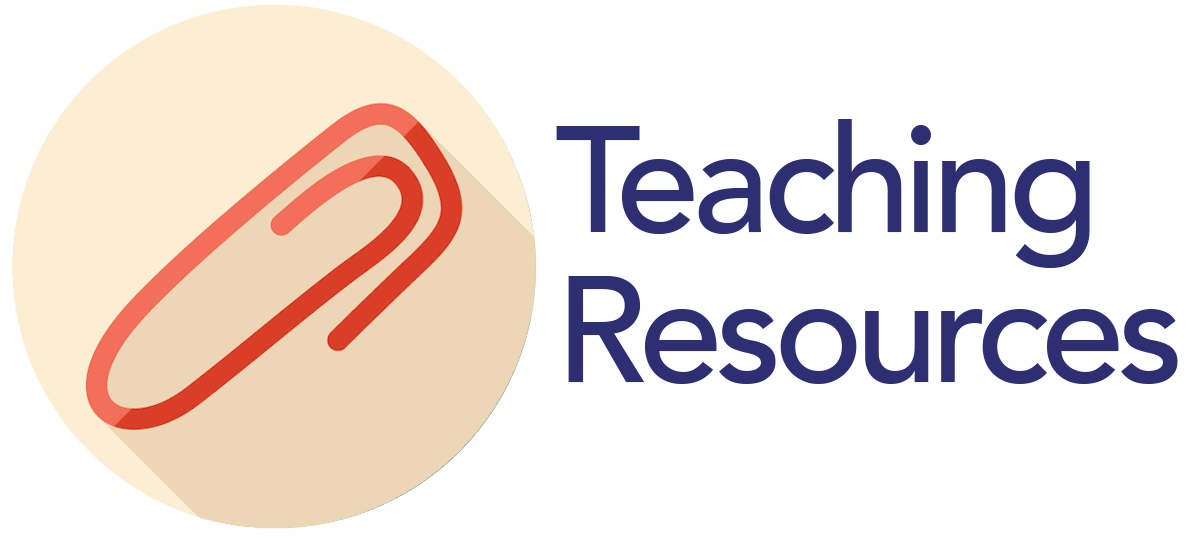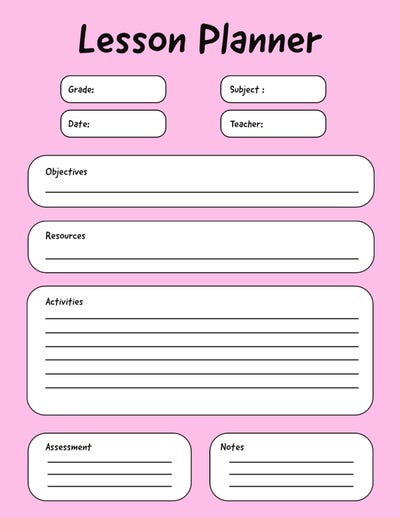Lesson Plan Templates
Lesson Plan Templates
Chances are if you are like me you need a template for almost every teaching activity. A well-structured lesson plan serves as a guiding compass for educators, ensuring a systematic and engaging learning experience. My comprehensive Lesson Plan Template is very carefully designed to empower teachers in crafting meaningful lessons that facilitate effective student learning. This template encompasses essential elements, fostering pedagogical best practices and instructional clarity.
Structured Pathways to Effective Teaching
1. Lesson Overview:
Provide a concise introduction to the lesson, outlining its objectives, relevance, and connections to the curriculum. This section sets the stage for the learning journey.
2. Learning Objectives:
Clearly define measurable objectives that articulate what students will know, understand, and be able to do by the end of the lesson. These objectives steer the instruction and assessment.
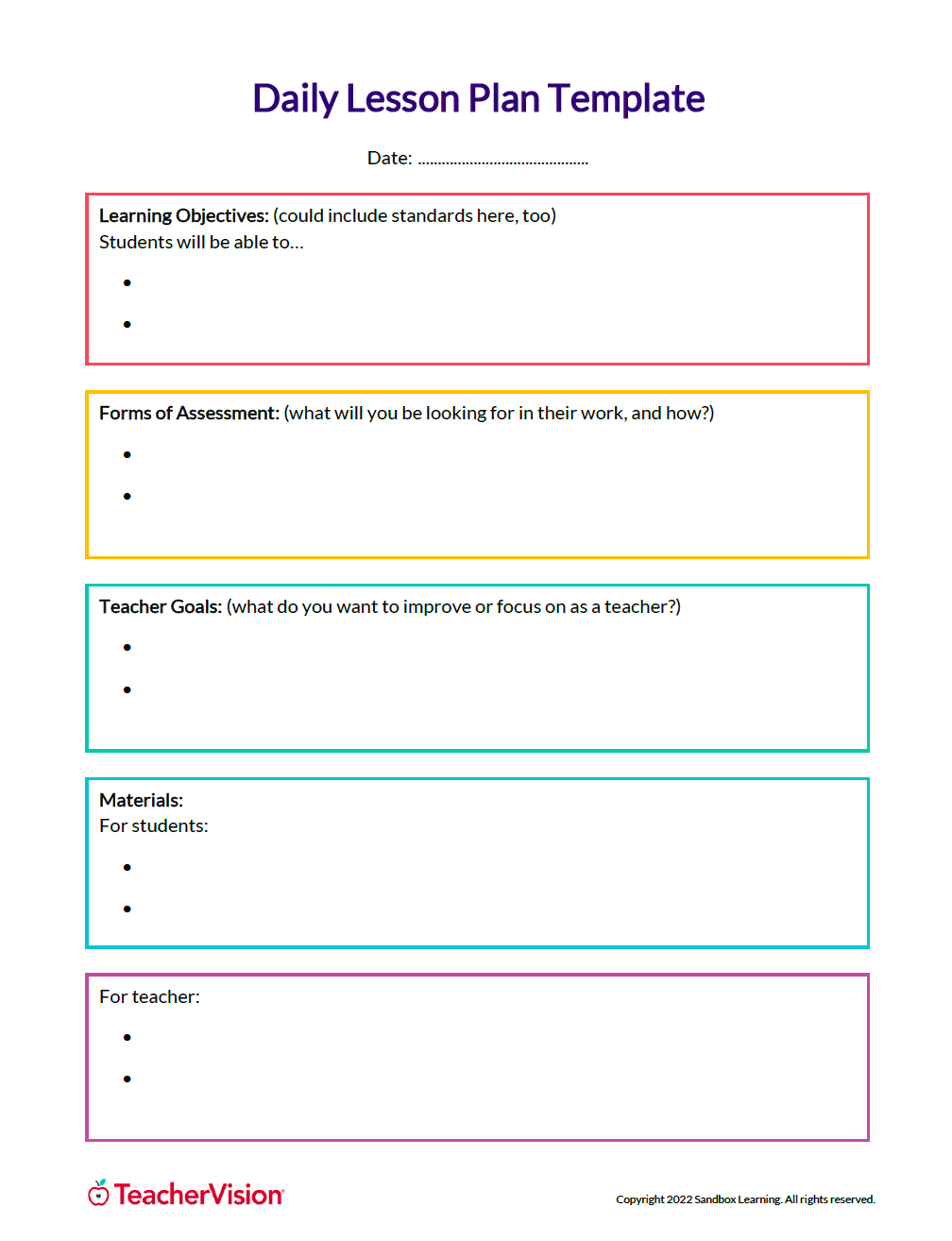
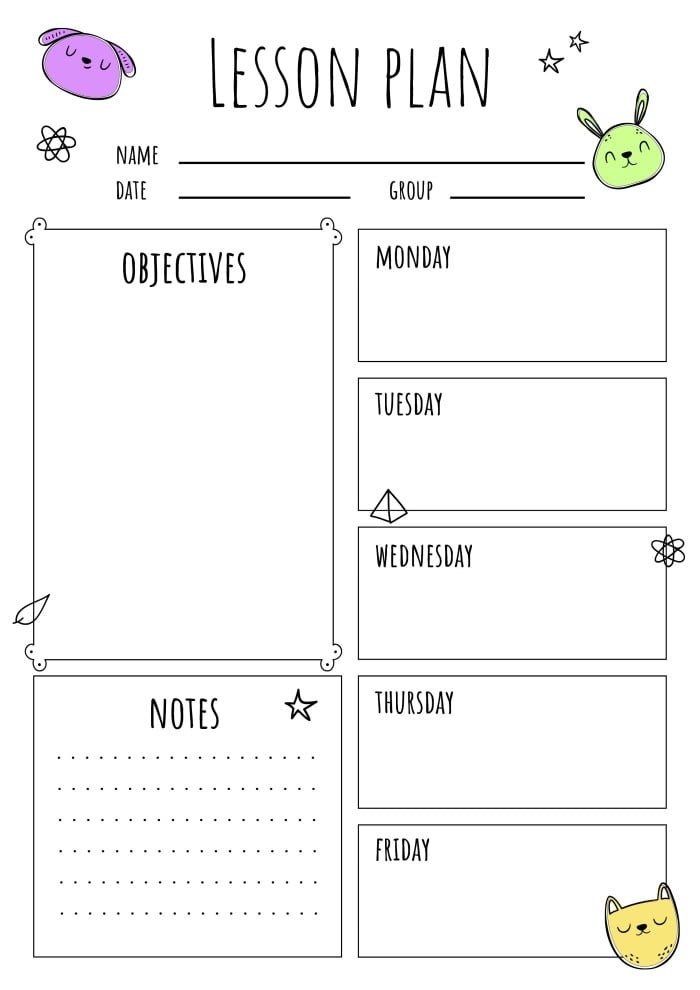
3. Materials and Resources:
List all materials, resources, and tools needed for the lesson, ensuring a seamless teaching and learning process. This includes textbooks, visual aids, handouts, and technology.
4. Instructional Strategies:
Detail the teaching methods, strategies, and techniques that will be employed to convey the content effectively. This section addresses diverse learning styles and promotes engagement.
5. Warm-up/Introduction:
Incorporate an engaging activity or question that captures students’ attention and introduces the lesson’s main concepts. This segment prepares learners for the upcoming content.
6. Main Activities:
Break down the lesson into segments, each targeting a specific learning objective. Include step-by-step instructions, discussion prompts, group activities, and interactive exercises.
7. Assessment and Evaluation:
Outline the assessment methods to measure students’ grasp of the material. This includes formative assessment techniques during the lesson and summative assessment methods to gauge overall comprehension.
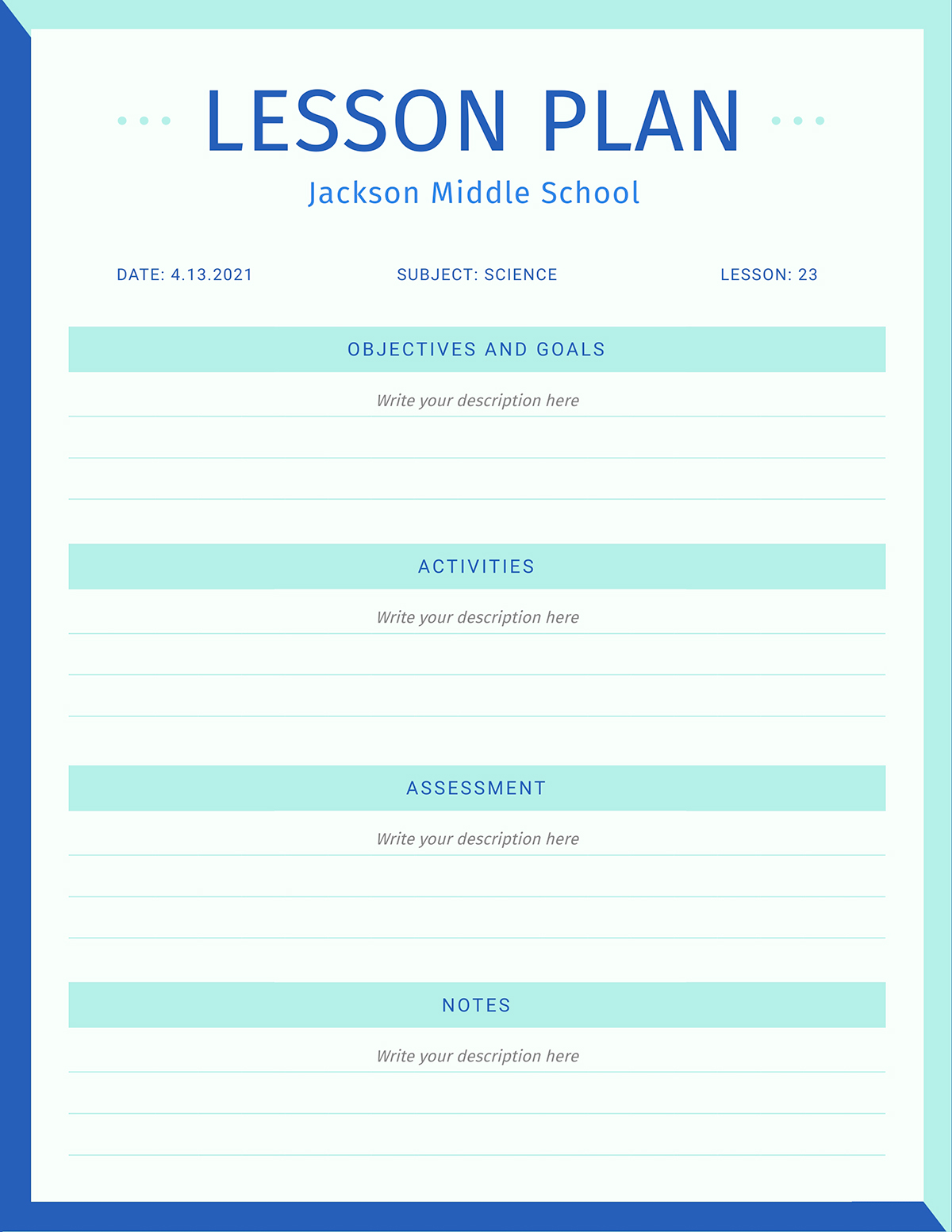
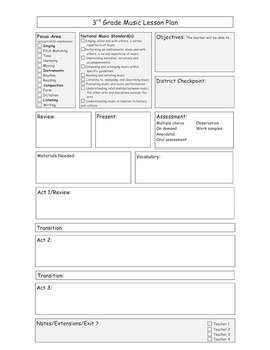
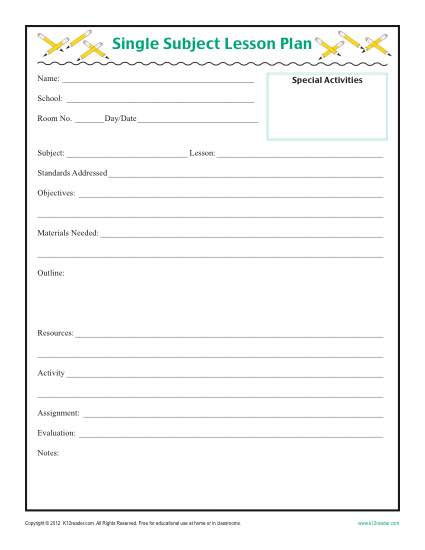
8. Differentiation:
Address diverse learning needs by providing strategies for accommodating various skill levels, learning styles, and abilities within the classroom.
9. Closure:
Conclude the lesson by summarizing key points, revisiting learning objectives, and fostering connections to future lessons. This stage encourages reflection and solidifies understanding.
10. Homework/Extension:
Suggest assignments or activities that extend the learning beyond the classroom, reinforcing the lesson’s concepts and encouraging independent exploration.
These Lesson Plan Template serve as an invaluable tool, guiding educators through a structured framework to create engaging and impactful lessons. It aligns with educational standards, promotes thoughtful instructional design, and ensures that teachers and students embark on a shared journey toward academic success.
